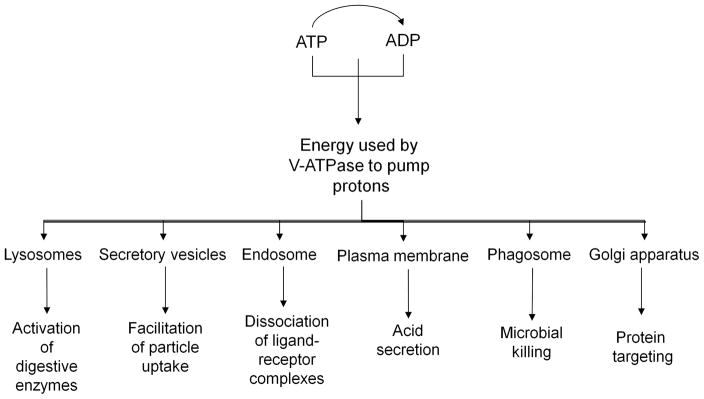Fig. 2.
Cellular localizations and functions of V-ATPase. V-ATPase is present in a variety of intracellular organelles. In the lysosomes and central vacuoles of eukaryotic organisms, the action of the V-ATPase creates an acidic environment which facilitates the degradation of macromolecules by activating digestive enzymes [30]. In synaptic vesicles and chromaffin granules, the proton gradient generated by V-ATPase acts as a driving force, which promotes the uptake of neurotransmitters and other small molecules destined for secretion [31]. In some cases, a low pH is needed in secretory vesicles to activate enzymes which can convert hormones such as insulin from their precursor to mature form [32]. At the plasma membrane in a variety of highly specialized cells, the V-ATPase is involved in acid secretion—an important process in urine formation[5], bone resorption[33], and sperm maturation and storage [34]. The enzyme also plays an important role in the lysosomal targeting of enzymes in the Golgi apparatus, giving rise to a low pH within late endsomes that allows the enzymes to dissociate from the mannose-6-phosphate receptor [35]. Finally, in the Golgi apparatus, the acidification provided by V-ATPase ensures proper sorting of proteins to their destined location within the cell [36].

